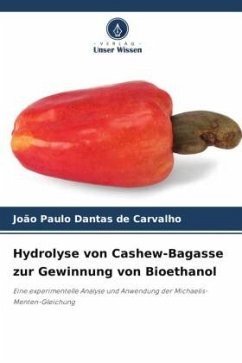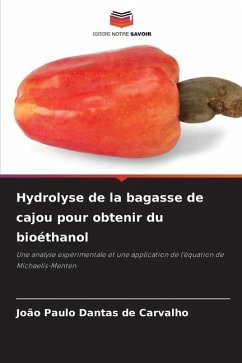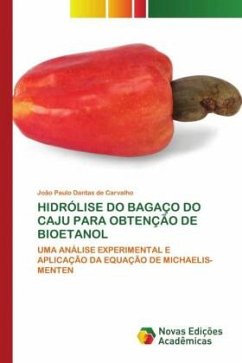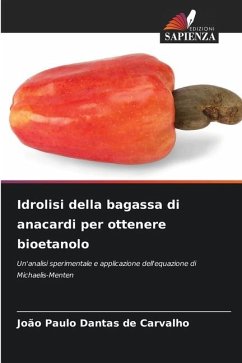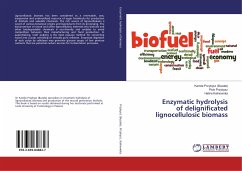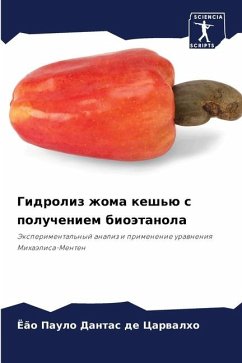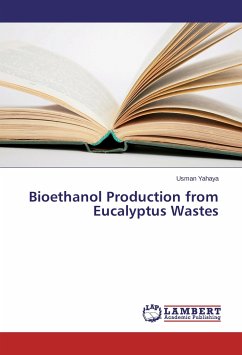
Hydrolysis of cashew bagasse to obtain bioethanol
An experimental analysis and application of the Michaelis-Menten equation
Versandkostenfrei!
Versandfertig in 6-10 Tagen
29,99 €
inkl. MwSt.

PAYBACK Punkte
15 °P sammeln!
Recently, the global demand for fuel ethanol has been expanding very rapidly, and almost all fuel ethanol is produced by fermenting sucrose in Brazil or corn glucose in the United States, but these raw materials will not be enough to satisfy international demand. Agro-industrial lignocellulosic residues, such as cashew bagasse, sugarcane bagasse, soybean hulls, etc., are abundant and low-cost sources for the biotechnological production of compounds with high added value, such as ethanol. In this context, the aim of this work was to evaluate the production of bioethanol from cashew stalk bagass...
Recently, the global demand for fuel ethanol has been expanding very rapidly, and almost all fuel ethanol is produced by fermenting sucrose in Brazil or corn glucose in the United States, but these raw materials will not be enough to satisfy international demand. Agro-industrial lignocellulosic residues, such as cashew bagasse, sugarcane bagasse, soybean hulls, etc., are abundant and low-cost sources for the biotechnological production of compounds with high added value, such as ethanol. In this context, the aim of this work was to evaluate the production of bioethanol from cashew stalk bagasse. To this end, the material was initially characterized in order to assess its cellulose and lignin content.





